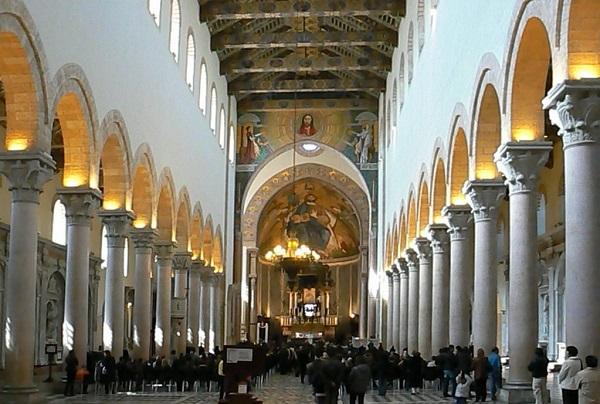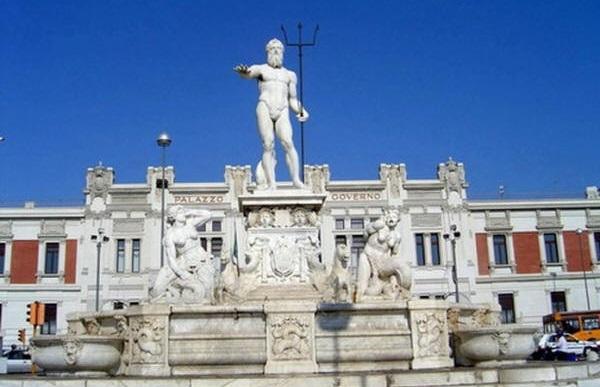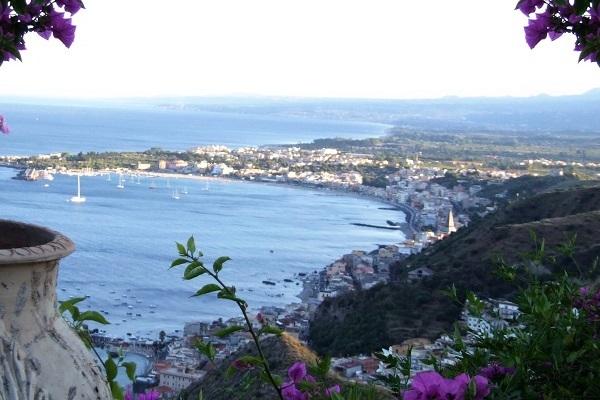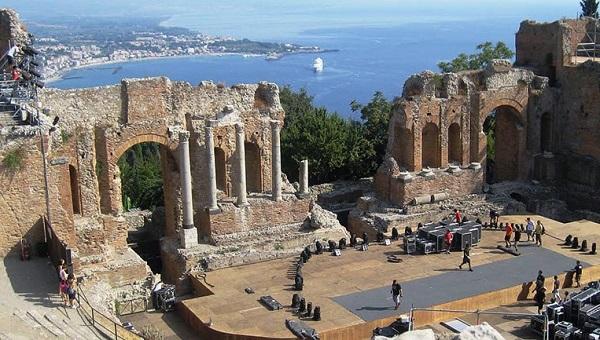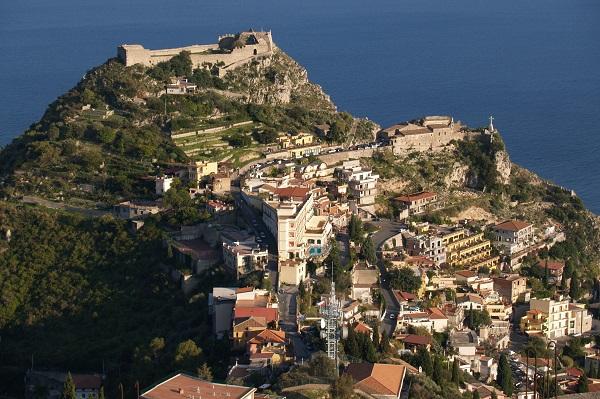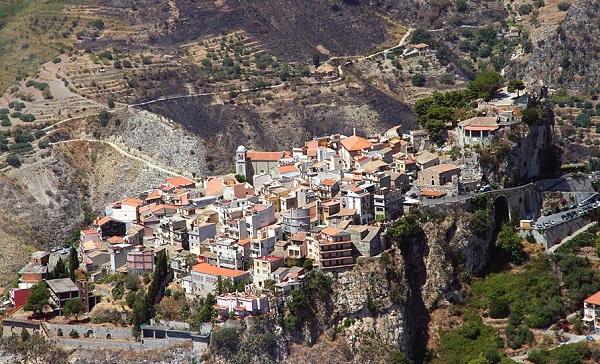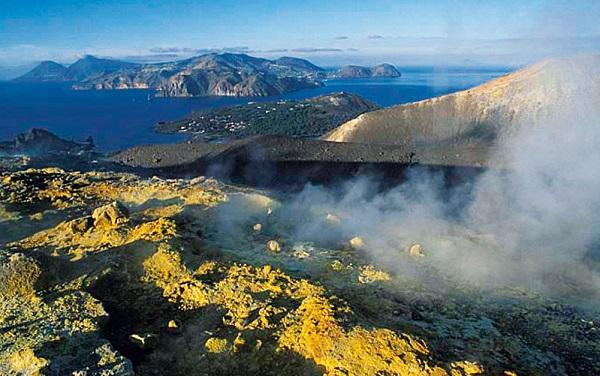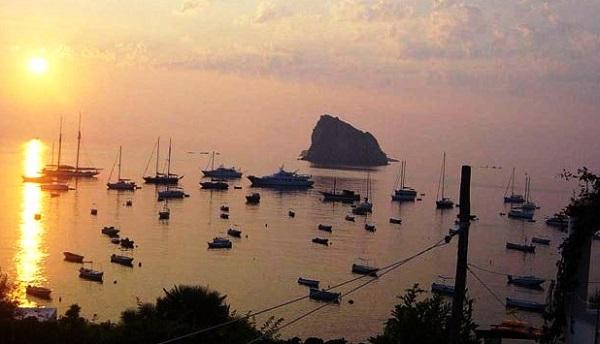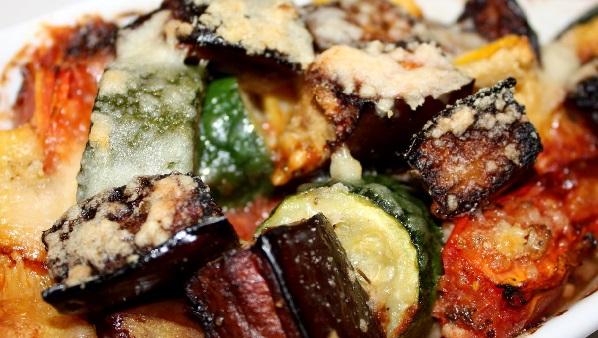
A land of volcanoes, this is the province of Messina.
You just have to look at the Etna and the Aeolian Isles to comprehend the grandeur of nature.
The Etna’s activity is one of the most fearful menaces due to its destructive force which has never spared anything.
Its awakening is still modeling the profile of this province, imprinting each time, a different shape, so much like an unsatisfied sculptor who continues to modify his work. And the results are magnificent. The beauty of this fascinating landscape attracts and repulses at the same time, and is a masterpiece ideally set in the framework of the sea

So much like a kaleidoscope of blue shades, it changes from nocturnal blue to a crystal transparency with slight blue veins. Nature here shines under a limpid sky, extraordinary even in its marine depths where another world awaits to be explored.
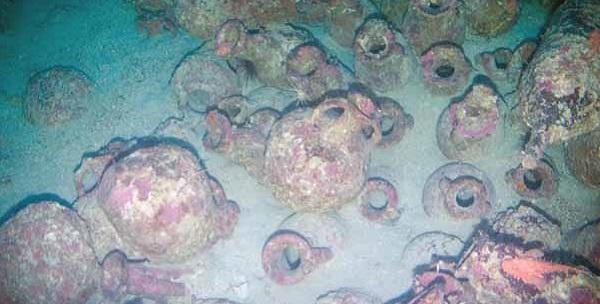
Lipari, Panarea, Salina, Stromboli, Vulcano, Filicudi and Alicudi are the seven pearls scattered over the waters facing Messina.
All are of volcanic origin but each has its own beauty and historical identity, a treasure which has been proclaimed a World Heritage Site.
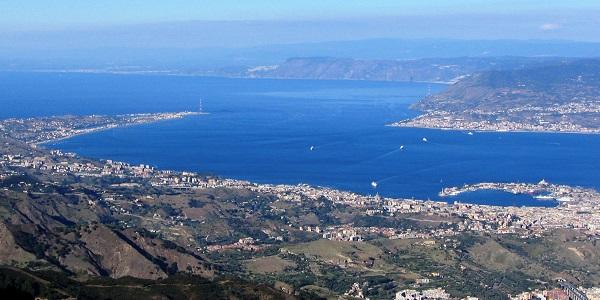 |
| As you cross the strait dividing Sicily from Calabria, you disembark in the port of Messina, right in the throbbing heart of the city. |
 |
As in the past, Messina is the main entrance gate to Sicily. Greeks, Romans, Byzantines, Arabs, Normans and Swabians landed on its coasts and strongly influenced its culture.
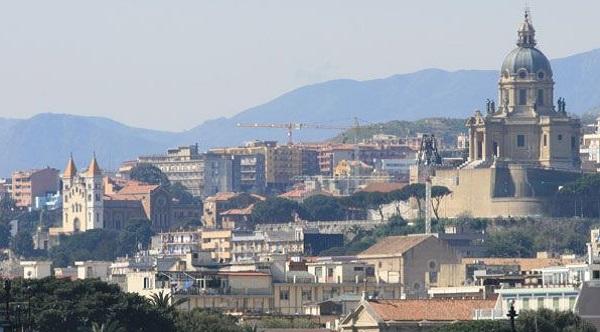 |
By exploring the small provincial towns, you will discover precious works of art, kept in churches and palaces, or important traces of great far away civilizations.
History narrates also of the traditions that have remained in the memoirs of the local people, and of the ancient flavors that still today, are prepared and set on their tables
|
 |
Modern styles have invaded the entire urban layout but some traces of its glorious past have remained.
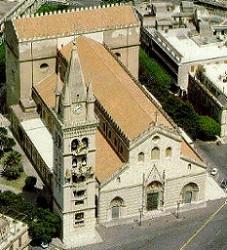 The Cathedral of Messina presents a décor with polychromatic bands on the lower end of the façade, interrupted by three entrance portals.
The Cathedral of Messina presents a décor with polychromatic bands on the lower end of the façade, interrupted by three entrance portals.
The Piazza Duomo embellished by the Fountain of Montorsoli, highlights an ancient Cathedral which in its exterior design recalls the lines of a fortress, graced by a splendid 17th-century portal.
Two main works kept in the church are the statue of St. John the Baptist, attributed to Antonello Gagini and the Sacrament Chapel which was created by Jacopo del Duca, a student of Michelangelo.
On the lateral bell tower, a mechanical clock shows the time through its panels arranged on the four facades.
Behind the church of Santa Caterina, you will find the Odeon, a tiny theatre of the Roman era, assigned to cultural events.
The 16th-century Orione Fountain stands in the centre of the square, and was completed by Giovanni Angelo Montorsoli, also a student of Michelangelo.
The Regional Museum offers a very interesting artistic itinerary, with its Picture Gallery in fact, exhibits precious works like the “Polyptych of St. Gregory” by Antonello da Messina, the “Adoration of the Three Holy Kings” and the “Resurrection of Lazarus” by Caravaggio.
This province is washed by the Tyrrhenian and Ionian Seas. Both coastal strips are punctuated by gracious localities, which offer, besides the beauty of nature, also interesting historical and artistic recollections.
Among all, Taormina, perched on a terrace, a sheer drop over the sea. Very steep and rocky, its coast is full of small bays coloured by a lush maquis and the blueness of the sea. Taormina is considered the “Lady” of the Ionic Coast, port of destination for celebrities and illustrious personages.
The Ancient Theatre, one of the greatest of the Greek-Roman epoch is immersed in an expanse of olives, oranges and almond groves that inebriate the air with their perfume.
Behind the stage the scene opens out to the moon and stars which capture your gaze, reflecting their light over the dark sea. Tiny art gems can be found in the alleys of its ancient quarter.
Below, also in Taormina, a view of the Castle and the Church of La Madonna Della Rocca
A few km away precariously hanging from the rocky peak is Castelmola, one of Italy's prettiest villages, offering a breathtaking view from the valley below.
The Etna, imposing, towers over the landscape and reveals a vegetation interrupted by trails of black, solidified lava flows.
Caves and different environments alternate along its slopes, and which you have to cross to reach the peak.
The Tyrrhenian coast is marked by the Golfo di Patti named after the same locality, well equipped like all the other beach resorts, to offer you a pleasant sea holiday. The Aeolian Isles stand before you and are an obligatory stopover for those who enter the Messina province. What meets your eye is a sequence of colours, a mosaic of tiles of the most varied hues with shades of the sea framing it all around.
And as if to confirm Mother Nature’s talent, it is known that the Aeolian Isles were crafted by the volcanoes which, though destructive on one hand, on the other create masterpieces of incomparable beauty.
Panarea is the heart of the nightlife, whereas Stromboli is the force of nature, with incandescent flames that compete with the moon’s brightness to illuminate the night.
Vulcano is the archipelago’s black pearl and Lipari is called the “lighthouse” because of the light irradiating from its mountain.
Sipari instead, is the land of flavours and fragrances, whereas Filicudi and Alicudi are solitary and wild.
The principal ingredient of local cuisine is obviously fish: fried or baked, baked in foil, or grilled.
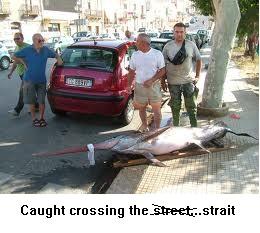
The preparation changes but what matters is utmost freshness.
Sword fish from the strait is particularly delicious and is cooked in a thousand equally appetizing ways.
Fish, crustaceans and mussels make a sumptuous soup and the condiment for rice recipes and spaghetti baked in foil.
Vegetables and fruits are other outstanding components of Messinese cooking.
The “caponata” aubergines with parmesan and potato fries are three of the best unique dishes prepared with the flavoursome products of this land.
Meat is never missing, especially goat meat or mutton, strictly grilled to exalt the taste even more.
Excellent dairy products highlight the “canestrato” cheese in the sweet or spicy version, goat “pecorino” cheese, “provola” and cottage cheese all processed according to ancient traditions.
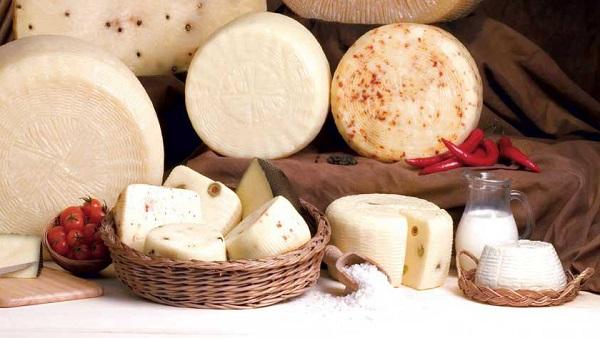 |
Olive oil, honey, hazelnuts, pistachio and berries are the delicacies particularly linked to the land, especially in the Nebrodi territory.
Local pastries propose the classic items that have become renowned the world over: “cannoli", “cassate", almond paste, “martorana” fruit and the typical Messina “pignolata".
The DOC wines of Etna and orange and lemon liquors match with and exalt the great flavors of this land.
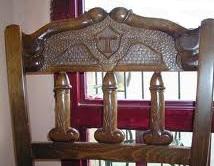
The almond wine can be tested at the Turrisi bar in Castelmola.
An experience not to be missed if you are in the neighborhood (sense of humor needed).
Be informed that the bar, a big tourist attraction, is famous not as much as for the 'oversized' salads, sweet wine and the views from its terrace, but also for some of the oversized 'decorative details' embellishing the little place.. From the door to the spoon handles, everything in here is shaped like...a 'minchia', a sicilian would say.





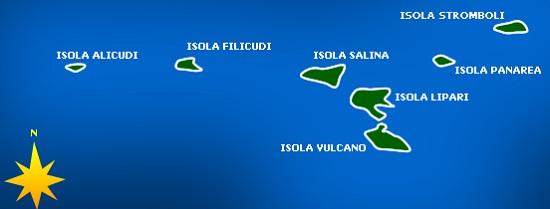




 The Cathedral of Messina presents a décor with polychromatic bands on the lower end of the façade, interrupted by three entrance portals.
The Cathedral of Messina presents a décor with polychromatic bands on the lower end of the façade, interrupted by three entrance portals. 